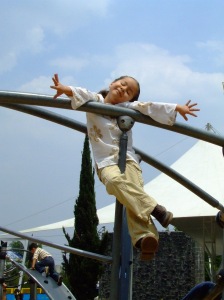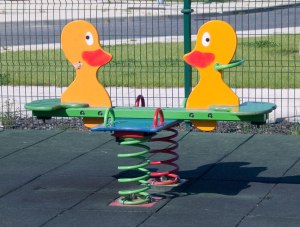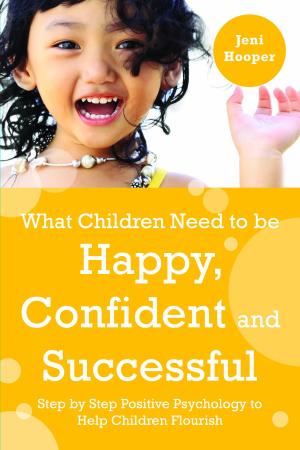Surveys of young people’s wellbeing often rely on self report measures. How do you feel? While this is not objective it is indicative of how young people see themselves. Often the media leap from these reports to banner headlines about worsening mental health and then counter commentaries about lack of evidence. The next thing comes along and the media moves on. There is talk of creating a lead teacher for mental health but little substance to what the role would entail. What we need instead of a media frenzy is a sensible evaluation of what emotionally healthy relationships look like so those who aren’t front line mental health professionals can feel informed and able to be that person for the young people they live and work with. Wellbeing does not belong to experts it is the responsibility of us all. Getting the basics right is important. In essence we all need to belong and be valued and when things go wrong have people be concerned and supportive. Sometimes that is enough, at other times we may need more.
Children need to be secure and confident to flourish. They need to believe in themselves and their ability to meet expectations. They need to have faith that the people who they live and work with have their best interests at heart. I’m talking about quiet confidence of the kind that makes you breathe easily and relax so you can get on with daily life without being plagued by uncertainty. We have a tendency to distrust confidence and assume it is pushy and overbearing but that’s not confidence it’s arrogance. For me the opposite of confidence is anxiety not arrogance.
In 2006 Sue Palmer’s book Toxic Childhood was published. Her concerns about the pressures on children of overstimulation, unhealthy diet, lack of sleep and access to inappropriate adult media remains current today. Indeed, I suspect it has accelerated with the economic downturn and the moral panic about the need to win the global race as a solution to stagnation and austerity. Children are being pushed harder and are turning to comfort food, energy drinks and excitement. Stress is toxic and makes choosing a healthy lifestyle difficult.
We need an alternative vision and one which is focused on what children need now, not in some misty, general and romantic way but in the specific day by day detail of what a child needs to grow up happy and healthy. In short, we need to set a pace which gives a child the self-confidence which comes from knowing they have the knowledge and skills for this stage of their life. We need to take our foot off the global race accelerator and step back.
Children want to learn, but their curiosity and interests may not map exactly onto the agenda set by family or school. The wise adult works out how to engage a child and offering choices creates a sense of control which is vital for a sense of autonomy. We need to draw them in rather than imposing demands using the big stick of fear of failure. Nor should we resort to over use of rewards which sap the child’s motivation and consigns them to follow the adult trail only when something big and shiny is on offer. Here are some suggestions of what works well to build a child’s knowledge and confidence.
1. Help a child discover things they enjoy. Be detectives together to discover what they find exciting and interesting. Notice the choices a child makes and help them to do more of what works for them. What a child finds interesting may be a sign of a personal strength which needs encouraging and nurturing.
2. Leave time free every day for independence which is entirely under the child’s control. Children who regularly plan and organise their time are more confident than children who depend on adult organised activities. They are more likely to discover and develop their interests which give them a range of possible future projects. Younger or less confident children may need to start small with 5 or 10 minutes and build the time up slowly from there.
3. Praise for effort and ingenuity rather than for results. Too much preoccupation with outcomes feeds anxiety and undermines confidence. “Will I succeed next time?” Doubt is toxic whereas optimism is energising. “I can do it if I try hard” is a better basis for learning than worrying about whether you have the ability to succeed.
4. Tell a child what you think is great about them. Praise character, actions and values rather than achievements. Positive feedback about character is sustainable praise which is building a child’s self-knowledge and ability to continue to make good decisions. Young children learn about themselves slowly because it requires mature cognitive skills to analyse situations closely. Children are overly dependent on other people’s opinions which is why bullying has such an impact. Children who are regularly reminded about their personal strengths are likely to be both more confident and more resilient to negative experiences.
5. Use WWW- what went well- to discuss the highlights of the day, this reflects on the positives which can be informative and allows privacy for a child to mull over what was less successful without unasked for adult scrutiny. Make sure that someone is available should they wish to talk about the disappointments of the day but remove the pressure to offer them for forensic examination.
6. Develop a playlist of favourite things to do. Include quick and easy as well as big events to provide a menu for free half hours, sunny days out and rainy days at home. Children spend much more time than adults engaged in things they are learning and consequently struggling with, the effort required is draining and rebalancing is important. Having time to use the skills you have and to do things which are satisfying is enormously important. I meet families where the entire day is lost to travelling to and from school and extracurricular activities followed by homework and little else.
7. Capture the happy times to be revisited and enjoyed all over again. Make a scrapbook of pictures and drawings if you like to handle things or use photos on your computer. Make a treasure box with tickets, found objects and souvenirs to remind you of days out.
8. Focus on the present we don’t know what tomorrow will hold and this is particularly true of children whose development is not predictable. By staying mindful we can focus on what is needed now and appreciate life in its fullest detail. When we rush headlong into the future we are following a fantasy which can delude us and cause us to miss out on a real understanding of the child in front of us.
9. Keep the future in context there is a danger in over thinking about the future because it is often driven by fear. When we share those anxieties with children they are likely to assume we have prior knowledge and that this will happen. This is a ticking, mental health time bomb which creates the climate for anxiety and depression. The world can become a better place, it does not follow that the current concerns in our society have no solution. So why do we thoughtlessly speak out loud about our concerns. We get things off our chests at the cost of passing on a heavy burden to the next generation. We need to gain a more realistic perspective.
10. Make gratitude part of your life. A friend of mine recently returned from working in orphanages in Zimbabwe. She met children and workers who were surviving in a very harsh climate and were grateful for what they had. They were focusing on the positives and that gave them the energy and optimism to work hard to improve life as far as they were able. Gratitude plays a major role in wellbeing and is a habit that has to a large extent been lost in recent years. It is confused with complacency and acceptance which it is not. You can be grateful for what you have while working flat out for a better world. The opposite is rarely true, those who ruminate on the negatives find their energy drains away and they are less able to make useful changes.
A child who is confident that things are going well; that their family, friends and teachers support them and who is thinking optimistically is going to flourish and is in a good place to avoid a toxic childhood.
Jeni Hooper is a Child and Educational Psychologist specialising in helping children to find their best selves and to flourish. Her book What Children need to be Happy, Confident and Successful: Step by Step Positive Psychology to Help Children Flourish is published by Jessica Kingsley Publishers and can be viewed here http://www.amazon.co.uk/What-Children-Happy-Confident-Successful/dp/1849052395/ref=tmm_pap_title_0



